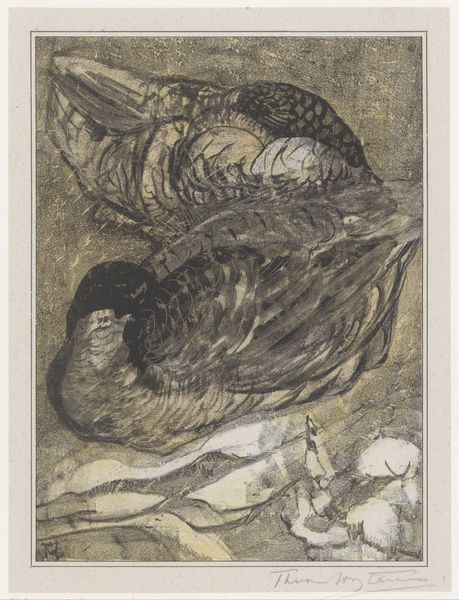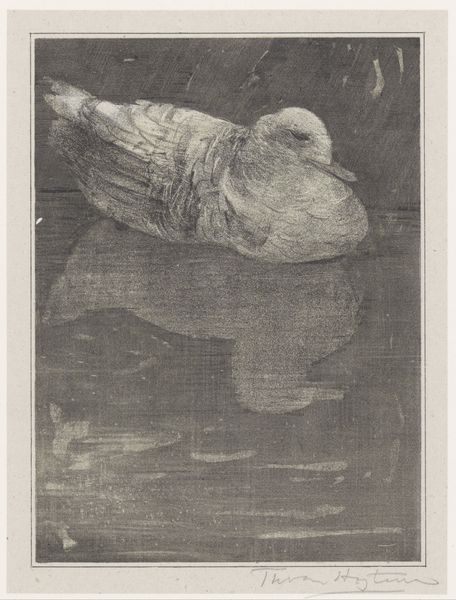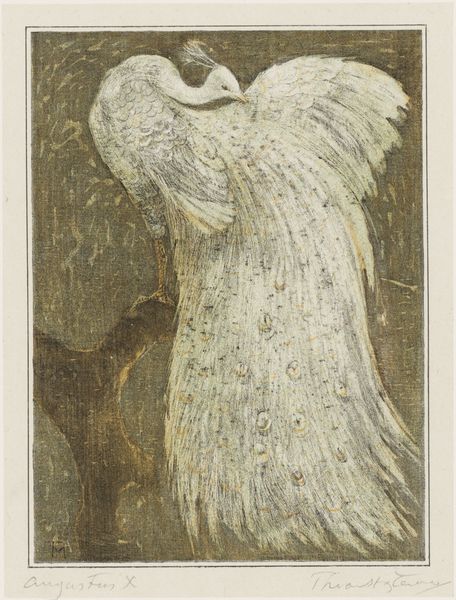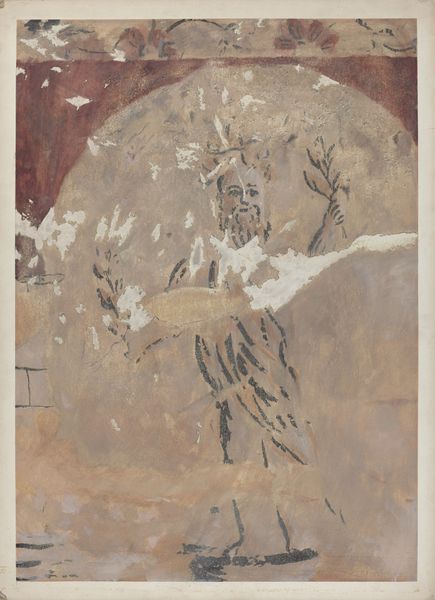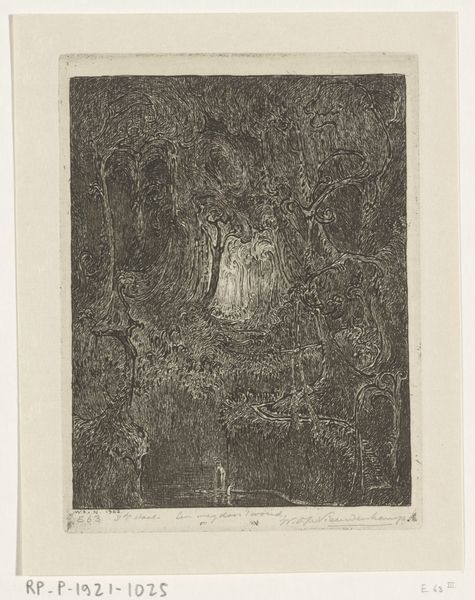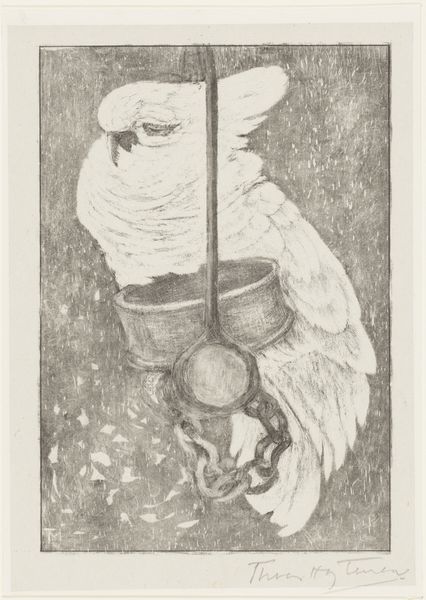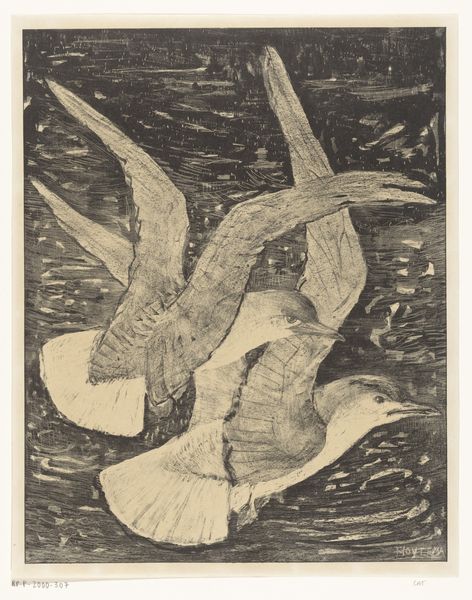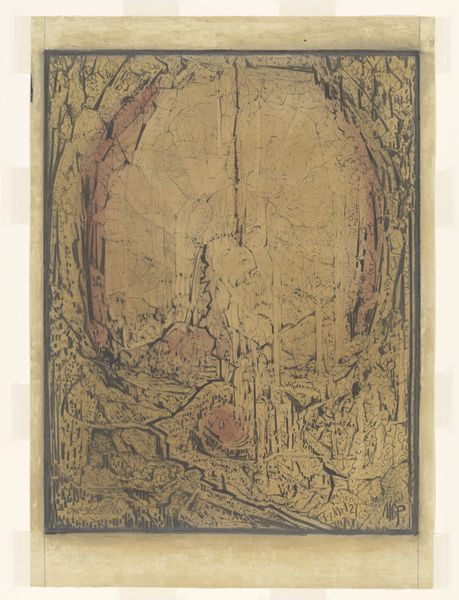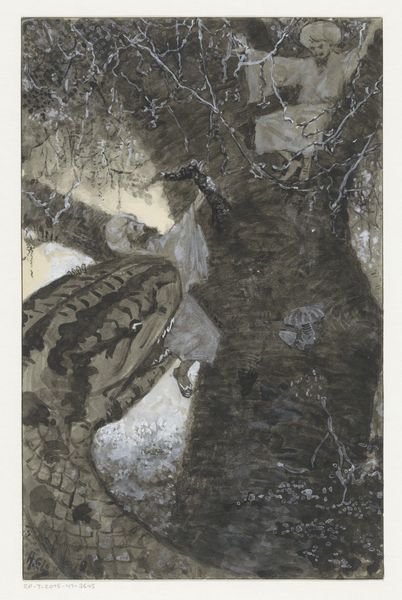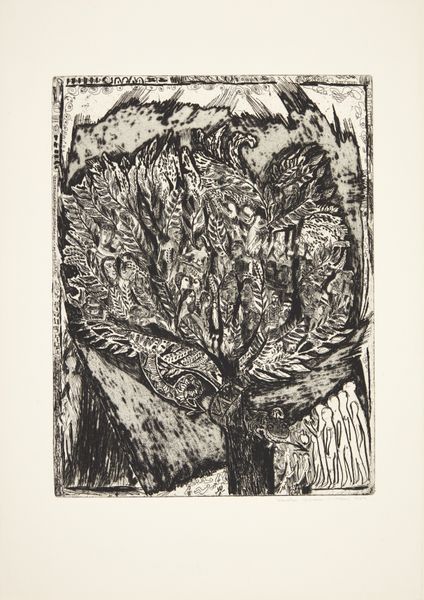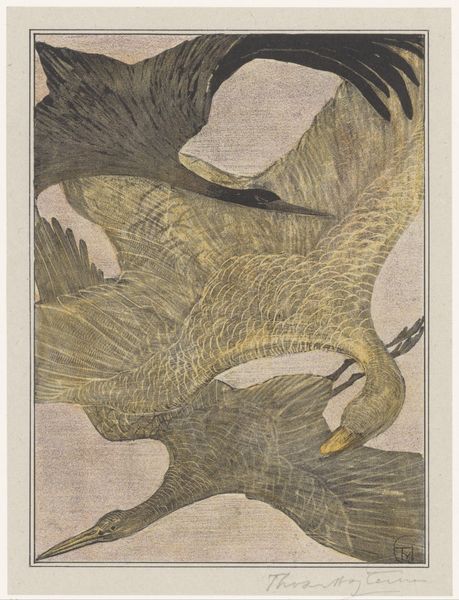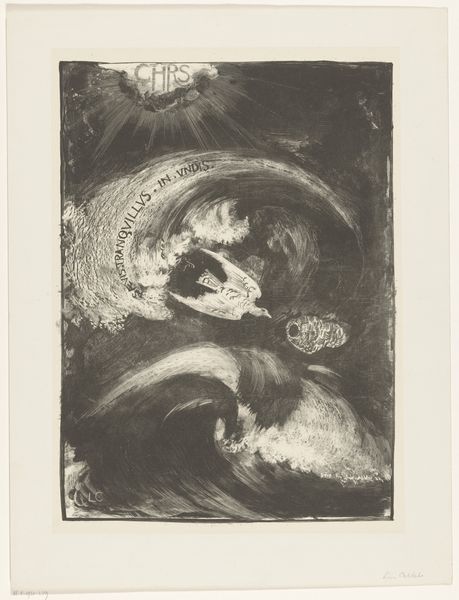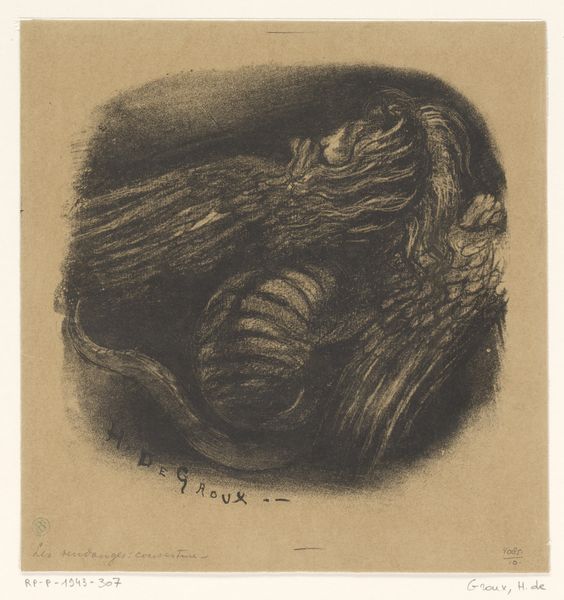
drawing, print, paper, pencil
#
portrait
#
drawing
# print
#
paper
#
pencil
#
watercolor
Dimensions: height 222 mm, width 168 mm, height 426 mm, width 303 mm
Copyright: Rijks Museum: Open Domain
Curator: Looking at this artwork, I immediately sense a quiet, contemplative mood. The subdued colors and the way the parrot is framed create a sense of intimacy, almost as if we're sharing a secret moment with this creature. Editor: Theo van Hoytema created this piece, titled "Kop van een papegaai" or "Head of a Parrot", sometime between 1878 and 1908. The artwork uses drawing and print media, incorporating pencil and what appears to be watercolor on paper. I wonder what role exotic pets played in the Dutch imagination at this time? Curator: That’s a crucial point. Pets, particularly exotic animals, often reflect societal power structures and colonial narratives. The parrot here isn’t just a bird; its presence raises questions about trade, ownership, and the human relationship with the natural world. Editor: Exactly! Consider the period, too. The late 19th and early 20th centuries saw increasing scientific interest in the natural world alongside burgeoning colonial enterprises. How did exhibiting these creatures, either alive or depicted in art, influence attitudes towards both nature and non-Western cultures? The subdued palette suggests an acceptance and integration of exotic imagery within the domestic space. Curator: There is also a stillness and melancholy in the image. Perhaps Hoytema aimed to critique that culture of acquisition by focusing on a singular bird trapped, in a way, on the page, out of its natural environment? It’s an interesting commentary, considering the larger context of natural history and animal representation. Editor: Absolutely. And from a contemporary perspective, we can see it as a reflection of the ethical issues surrounding keeping exotic animals as pets. This simple study invites contemplation on captivity and displacement. I’m also drawn to the texture achieved by the pencil strokes— it’s as though Hoytema is attempting to capture every facet of the parrot's essence. Curator: Thinking about today, engaging with "Kop van een papegaai" allows us to reconsider these historical practices and the continued exploitation of wildlife in the context of global trade. Thank you. Editor: Yes, considering the quiet subversiveness of "Kop van een papegaai", we can interpret it not just as a pretty study, but also an understated commentary on social relations. A piece that leaves much to think about.
Comments
No comments
Be the first to comment and join the conversation on the ultimate creative platform.
